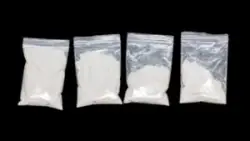
The drug that reverses a heroin overdose is called Naloxone. Usually sold
under the brand name Narcan, this medication reverses the effects of opioids.
It blocks the neural receptors that process the command given by opioids
such as morphine, heroin, oxycodone, fentanyl, and more. Drugs like heroin
slow down one’s breathing. That is why if you have too much of it,
it can be fatal. Naloxone, if administered in time, can reverse this action.
Naloxone must be handled with care. Emergency Medical Technicians usually
have the medicine on site if they receive calls for heroin overdoses.
The opioid antagonist can be given through a nasal spray or through an
injection in a muscle, vein, or through an IV drip.
Someone who overdoses on heroin puts their body through extreme exertion.
That is why when Naloxone is used, the body counteracts the existing commands
from the opioid. The body’s recovery from heroin effects can cause
major side effects.
Common side effects of Naloxone include:
- Sweating
- Nausea and vomiting
- Increased heart rate
- Chest pain
- Seizures
- Irregular heart rate
Like other medications, it is important to understand a patient’s
medical history before administering Naloxone. Some individuals have an
allergic reaction to the drug. Others may have taken other medicine that
does not mix well with the anti-heroin medication.
According to the National Institute on Drug Abuse, over 11,000 people died
from heroin overdoses in 2014. The Centers for Disease Control and Prevention
suggests that we are experiencing a heroin epidemic, given the increase
in users over the past years. Unfortunately, our judicial system treats
these individuals as criminals, rather than victims of an awful addiction.
At Koffel Brininger Nesbitt, we believe incarcerating drug users is not the
answer. We believe rehabilitation and reform is. We started a
preventative law program to help families heal their addicted loved ones and try to avoid
legal charges in the future.
Call or text 614-884-1100 or complete a Free Case Evaluation form

